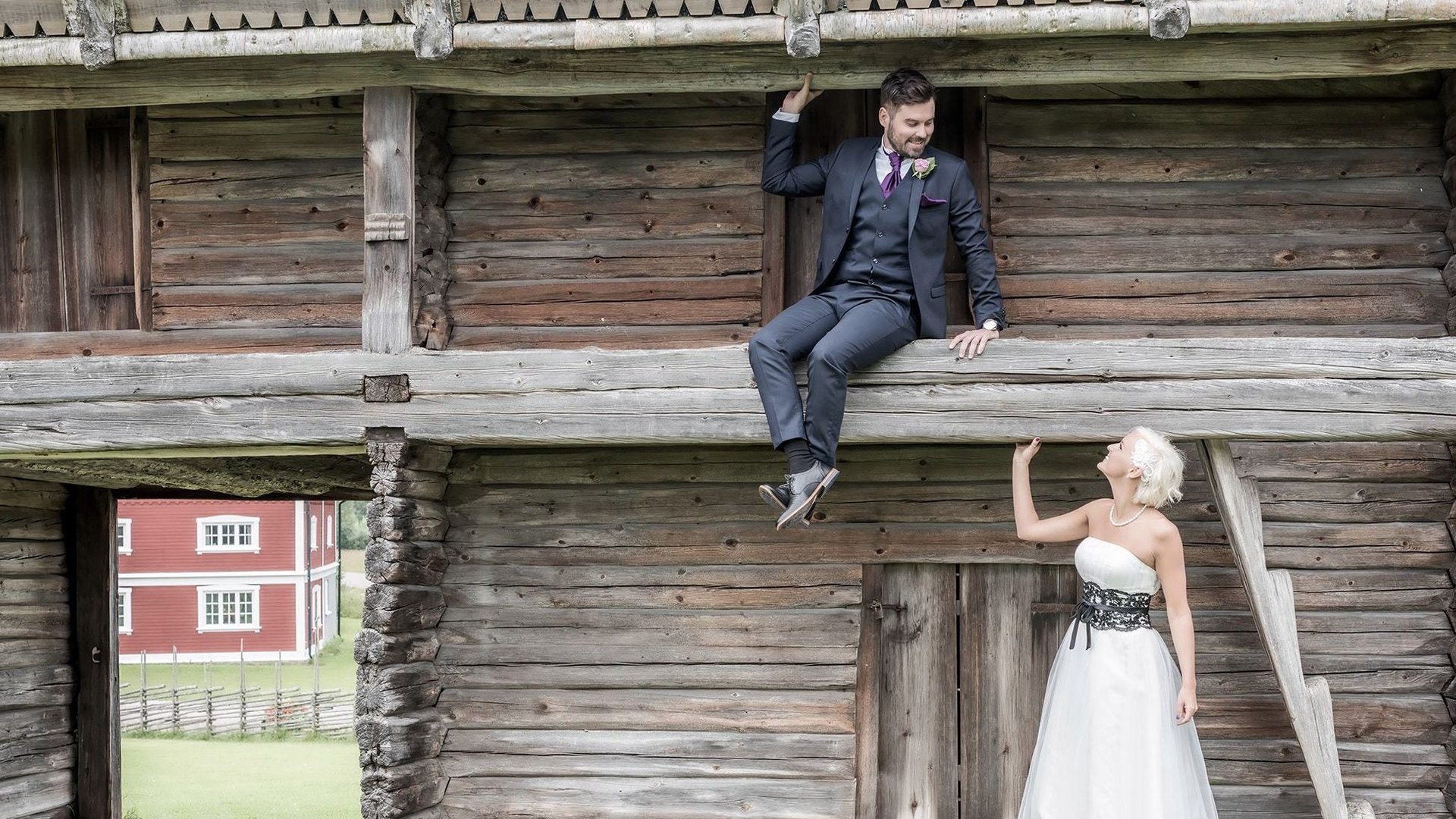Barn weddings are bringing the wedding industrial complex to farm country
When I got married in 2009, I walked down an aisle flanked not by church pews, but by long tables covered in simple white tablecloths, burlap runners, and napkins in harvest hues of russet, gold, and plum. Instead of floral centerpieces, local apples filled wooden bowls. I carried a bouquet my sister fashioned out of brightly hued Indian corn. Our guests drank water from mason jars and sipped wine during the ceremony, which was in the backyard of a hundred-year-old house built over a creek. There was technically no barn, but it was a barn wedding.


When I got married in 2009, I walked down an aisle flanked not by church pews, but by long tables covered in simple white tablecloths, burlap runners, and napkins in harvest hues of russet, gold, and plum. Instead of floral centerpieces, local apples filled wooden bowls. I carried a bouquet my sister fashioned out of brightly hued Indian corn. Our guests drank water from mason jars and sipped wine during the ceremony, which was in the backyard of a hundred-year-old house built over a creek. There was technically no barn, but it was a barn wedding.
At the time, I thought we were bucking the consumerist circus of the wedding industry and being rather original—and maybe in some small ways we were. But since then “barn wedding” has become something of a cliché, as images of burlap, chalkboards, flower crowns, barrels, and hay bales clog wedding Pinterest.
The popularity of barns, and the low-key, rustic aesthetic that goes along with them, has grown dramatically since I said my vows standing on a bed of locally collected autumn leaves—and it shows no sign of slowing down. In its most recent annual report about wedding industry trends, the wedding-planning website the Knot found that “farm, barn and ranch reception venues increased from 2% in 2009 to 15% in 2017.” Those numbers are based on a self-selecting survey of the relatively well-off couples (mostly brides) who read The Knot, so they’re to be taken with a grain of salt. But if you’ve been to a barn wedding lately (and you probably have), then you know that its aesthetic has arrived in America’s farm country.
Barn weddings are appealing as a more casual alternative to formal banquet hall or hotel celebrations. They take the green setting of the country club, and leave behind the bourgeois aesthetic. A barn is a rough-hewn, empty slate for you to fill with the full force of your love and design savvy. A fixture of the aspirational class, as surely as an NPR tote bag or a pair of fancy clogs, barn weddings are appealing in the same way as a waxed canvas apron or an elaborately simple plate of roasted heirloom root vegetables.
But finding a suitable barn for a wedding is often far from cheap: “Expect to spend anywhere from $4k-$30k to just walk in the door,” wrote one wedding planner in a cautionary article in Huffington Post. That’s money that many small-scale farmers can use—the rural idyll imagined by many city dwellers and advertised on organic food packaging ignores many of the harsh economic realities of agriculture today.
After the barn rental itself, all those tents (in case it rains), lighting (because the countryside is dark), and mason jars (pricier than standard glassware) mean a barn wedding can actually be more expensive than one in a dedicated venue. And the really nice thing about banquet halls and hotels is that they were specifically designed to host a crowd of people, and generally come equipped with catering facilities, adequate electricity, and bathrooms. Barns were designed to house hay and four-legged animals, for the most part, and tend to lack many basic amenities.
A few years ago I went to a lovely wedding on a horse farm with my then-six-month-old son. I ended up breastfeeding on a hay bale and baling out before the s’mores cake was cut. Access and convenience can be an issue, period. You might love the thought of your wedding party traipsing through a field of wildflowers to get to your venue, but what about your great auntie Phyllis and great uncle Burt? What about your college roommate’s husband, who uses a wheelchair? What about the upcharge from your caterers for having to haul everything out via dirt roads? And of course, you can rent fully accessible port-a-potties but, well, they’re not exactly the height of elegance.
Still, there’s no denying that something about a rural setting does seem to inspire a certain generous ingenuity. For her lovely rustic wedding, my sister decided that cakes were for fools and asked guests to bring their favorite pie, if they felt moved to do so. Everyone felt moved to do so and it was the single best desert table at any wedding I have ever attended. (The leftovers were even better the next morning.)
And the rustic wedding trend has inspired some rural businesses to up their barn game, renovating old barns for new use, complete with modern touches such as running water and electricity. Casey Scieszka, the innkeeper and owner of the Spruceton Inn, a nine-room “bed and bar” in the Catskill Mountains in New York state, recently finished restoring a barn on her property for events, workshops, and, of course, weddings.
“The barn’s previous inhabitants were a bunch of goats,” says Scieszka. She points out that using barns as a place to celebrate, just like a lot of hipster aesthetics, is nothing particularly new. “There’s definitely a rich history of line dancing and barn dances…where people would have potlucks,” says Scieszka.
While barn dances still take place in Scieszka’s Catskill town, she says that so far they haven’t hosted a rustic wedding that went full circle and included contra or line dancing. “They still want to have their Pachebel Canon or their Rihanna, in their barn,” she says. “But I think that…juxtaposition is the fun.”